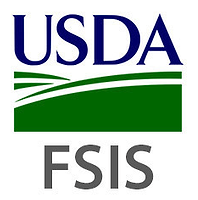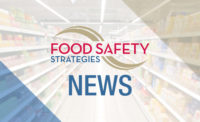Source: Food Safety News
The 2013 conference for the International Association of Food Protection kicked off in Charlotte, N.C., Sunday night, with 2,700 attendees from around the world convening to share the latest advancements in food safety technology and philosophies. The keynote address was delivered by Dr. David Acheson, former Associate Commissioner for Foods at the U.S. Food and Drug Administration and current director of the Food and Import Safety Practice at Leavitt Partners.
After warning the attendees that he wanted to be inoffensive but provocative, Acheson started the conference off with an attempt to shift the industry’s approach to how food safety improvements come about.
Here’s the thesis in a nutshell: Historically, food safety improvements have been inspired only after deadly outbreaks — or as Acheson called them, “disasters.” Instead, he said, we should shift that paradigm to facilitate change out of planning and designing food safety systems that best mitigate risk.
There are a lot of challenges along the way to making that a reality. Acheson highlighted the 2011 Jensen Farms cantaloupe Listeria outbreak, which led to the deaths of nearly 40 people, and then the 2011 European sprout E. coli O104:H4 outbreak that sickened thousands and killed more than 50.
“Europe, 2011: I think many of us in the United States took a deep breath and said, ‘Whew, this could have happened here,’” he said. “And if you didn’t, you should have, because it could.”
Acheson named four major outbreaks that he felt inspired the most change to food safety:
- 1993: The Jack in the Box E. coli O157:H7 outbreak. This outbreak inspired the adoption of hazards analysis standards at the U.S. Department of Agriculture and made E. coli a household name and a federally recognized adulterant in ground beef.
- 2006: The Spinach E. coli O157:H7 outbreak. This inspired the development of proactive industry standards like the Leafy Green Marketing Agreement.
- 2007: The Chinese melamine pet food outbreak. This shifted the dialogue on imported food squarely toward food safety.
- 2008-09: The Peanut Corporation of America peanut butter Salmonella outbreak. This inspired major parts of the 2011 Food Safety Modernization Act.
One of the most concerning trend Acheson has noticed in the industry is whenever a company hasn’t learned from the mistakes of its competitors. Peanut butter is a perfect example, as subsequent peanut butter outbreaks have occurred following the massive peanut butter recall and outbreak of 2008-2009.
Acheson also predicted a number of other trends looking to food safety in the near future:
- Food recalls will rise because of new technology with improved abilities to catch contamination and connect the dots.
- Illnesses linked to microbial pathogens will eventually decrease.
- Illnesses attributed to allergens will rise.
- Illnesses linked to long-term chemical exposure will increase. “We don’t understand long-term chemical exposure,” Acheson said. “We can measure chemicals, but measuring the impact over somebody’s lifetime is really, really difficult.”
- Food companies are going to get sued more.
One important point going forward, Acheson said, was to recognize that everyone has a role in keeping food safe. That means the industry, the regulators and the consumers all have a part to play in ensuring the public’s health.
Acheson closed out the keynote with messages to each of those groups, keeping in mind that the risk of foodborne illness will never be completely eliminated.
“We’ve got to accept that we’ll always have a risk with food. We’ll never get to zero risk,” Acheson said. “It’s inherently a risky game, but we’ve got to manage it.”
Acheson’s message to industry is that companies need to enhance their food safety culture, understand where their risk exists, focus on food safety and quality over regulatory compliance, and embrace technology.
“And remember: You’re never done, because the science changes and the risk changes,” he added.
Regulators should reward good industry behavior, Acheson said. Local, state and federal regulators also need to know how to harmonize and each play an integral role in food safety. Regulators should also listen to industry’s perspective, as no one knows the industry better than itself.
He had a few messages for Congress, too: “Learn about the food industry.” Create a single food safety agency. Simplify statutes. Drive new laws based on risk. Support studies on understanding long-term risk. Take the politics out of food safety.
His message to consumers: Take responsibility for the things you can control. Be open minded to technology. Be a positive influence on good practices through buying habits.
“You know there’s a possibility that when you bring home ground beef or raw poultry into your house it’s going to have Salmonella or Campylobacter or E. coli,” he said.
The biggest buzzword Acheson might have stirred on Sunday night? When he was chastising regulators for “internal competitiveness,” he just had one word for them:



